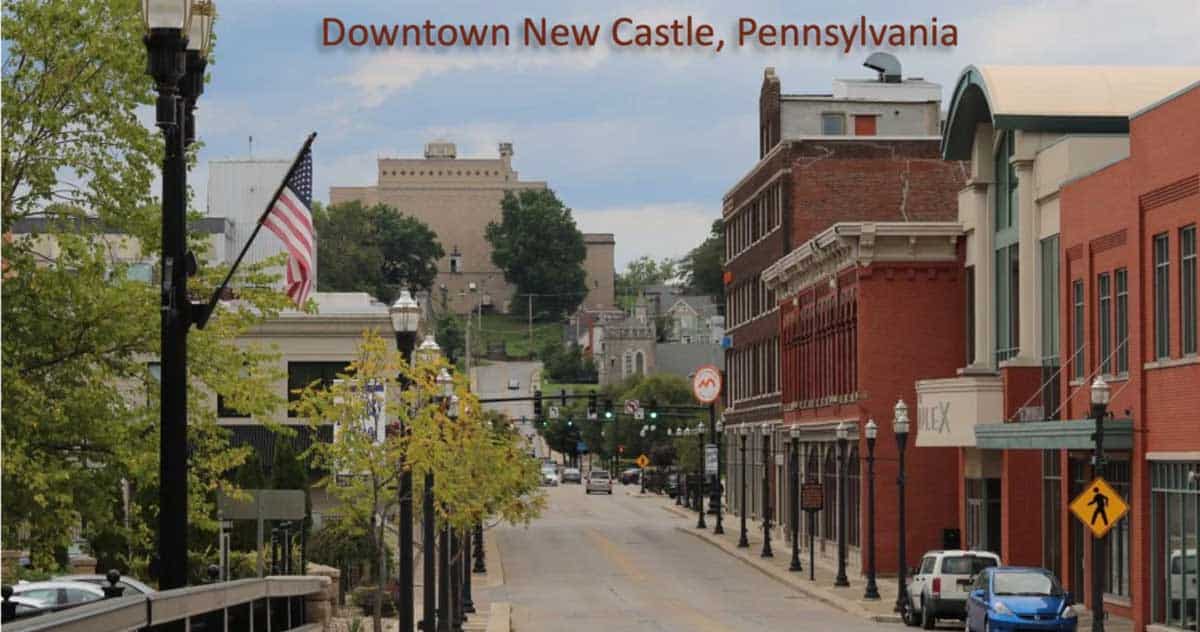Public spaces play a vital role in enriching urban life, serving as essential refuges for small businesses and vibrant gathering points for communities. These spaces are key in fostering community well-being, offering a wide array of positive outcomes ranging from health to social and economic benefits. Public spaces anchor downtowns and urban environments, rendering them integral to city planning and urban development by contributing to a city’s character and cultural life.
Drawing from my perspective and expertise as an urban planner, real estate developer, builder, and advocate for community revitalization, this article explores the transformative power of public spaces in reviving downtown areas. I emphasize urban renewal through public policies and design to share how investments in open places and urban public spaces drive economic prosperity and enhance city life. Supported by case studies and best practices, this brief discussion will illustrate the economic impacts of rejuvenated public areas and propose strategies for integrating them into urban development efforts.
With a focus on creating sustainable, pedestrian-friendly, and transit-oriented spaces, this piece seeks to guide municipal leaders, developers, urban planners, businesses, and community leaders in harnessing the potential of public places for comprehensive downtown revitalization.
The Role of Public Spaces in Revitalization

Public spaces are not just physical locations; they are the heartbeats of urban revitalization, serving as catalysts for transforming downtown areas into vibrant, thriving communities. Having witnessed firsthand the transformative power of urban spaces through my experience in planning and development, I’ve observed how thoughtfully designed public spaces can reshape perceptions, acting as catalysts that draw people and businesses alike. Following are a few examples:
1 ) Incubators for Innovation and Entrepreneurship: Public spaces are fertile ground for entrepreneurs and small businesses, offering opportunities for growth and innovation. However, this requires intentional planning and support, especially for underserved businesses. For instance, the Flint Farmers’ Market has embedded small business support into its placemaking vision, providing resources and training for entrepreneurs [1].
2 ) Cultural and Social Hubs: These spaces serve as open forums for cultural activities, attracting visitors and fostering a sense of community identity and pride. They enhance social interaction, promote physical and mental health, and support cultural and civic identity, making them indispensable for community well-being.
3 ) Economic Catalysts: Beyond their social and cultural contributions, public spaces directly influence local economies. They attract people to live in the area and to visit, spurring tourism, creating jobs, and boosting local economies. Investments in public spaces, as seen in Albuquerque, Flint, and Buffalo, have changed perceptions of downtown areas, making them destinations and supporting local small businesses [1].
Thoughtfully integrating elements that foster a vibrant public environment is crucial for ensuring that downtown revitalization efforts cultivate long-term, sustainable growth and economic vitality.
Economic Benefits of Public Space Investments

Strategic investments in creating and enhancing vibrant public spaces not only catalyze urban revitalization by transforming underutilized areas into thriving community hubs but also yield substantial long-term economic benefits by attracting businesses, residents, and visitors, thereby bolstering local economies, as follows:
Infrastructure and Private Sector Development:
Public space investments often spearhead necessary infrastructure improvements and encourage further private sector development. This dual effect can rejuvenate downtown areas, making them more attractive for businesses and residents alike [1].
Increased Land Values and Entrepreneurship:
Such investments can substantially boost land values. This, in turn, opens the door for small-scale entrepreneurship, giving rise to local markets and businesses that invigorate neighborhoods. Notable examples include the Union Square Farmers Market in New York and Little Rock’s River Market, both of which have played pivotal roles in neighborhood revitalization [2].
Economic Impact of Specific Projects:

-
Millennium Park, Chicago, with a $500 million investment, generated over $2.6 billion in visitor spending and added $1.4 billion in adjacent real estate value [3].
-
ArtPrize in Grand Rapids, Michigan, created an immediate economic impact of $15.4 million, fostering increased spending by residents and tourists [3].
-
Gabriel’s Wharf, London, transformed from an abandoned warehouse district to a vibrant area with a modest investment, creating 60 jobs and becoming a profitable space [3].
These examples clearly illustrate the transformative capacity of strategic investments in public spaces to catalyze economic vitality and breathe new life into urban landscapes, emphasizing the pivotal role such initiatives can play in fostering sustainable growth and creating thriving, vibrant communities.
Case Studies and Best Practices

Exploring the transformative power of public spaces through global initiatives and local events reveals a blueprint for revitalizing urban areas. These case studies and best practices offer a roadmap for integrating public spaces into the fabric of cities, fostering community engagement, and stimulating economic growth:
Transforming Cities through Placemaking & Public Spaces:
-
This program demonstrates the global importance of public spaces, aiming to elevate international awareness and encourage community-driven revitalization efforts [4].
-
The Power of 10 Concept: A strategic approach to placemaking, this concept champions the idea that having at least ten attractions or activities in a public space can significantly enhance urban life, encouraging residents and stakeholders to actively participate in the revitalization process [4].
Innovative International Events and Programs:
-
Ciclovía in Bogotá, Colombia: A weekly event that transforms major streets into car-free zones for cyclists and pedestrians, promoting healthy lifestyles and community cohesion [4].
-
Spaces of Culture Program in Gyrumi, Armenia: Focused on boosting community engagement and participation in managing public spaces, and fostering a sense of ownership and pride among residents [4].
-
Brno Street Festival, Czech Republic: Celebrates urban life and the importance of public spaces, creating vibrant community gatherings that attract visitors and stimulate local economies [4].
These case studies showcase multiple innovative strategies employed by cities globally to harness the transformative power of public spaces, repurposing them as catalysts for community rejuvenation, fostering vibrant social interactions, and creating economic opportunities that propel sustainable urban growth.
Economic Impacts of Revitalized Public Spaces

Comprehensive Measures of Revitalization
Understanding the economic impacts of revitalized public spaces requires a multifaceted approach. Key metrics include trends in employment, poverty rates, demographic shifts, the cost of doing business, the resident experience, and the health of both the business and housing markets.
Equally important is ensuring equitable access to the benefits of revitalization, which often requires targeted support and programming to bridge gaps in underserved communities.
Value Enhancement through Proximity
Properties located near well-maintained parks and public spaces typically enjoy higher values, contributing significantly to the local tax base. This financial uplift is not just limited to property owners but extends to entire communities, as these areas also attract non-resident visitors, injecting new dollars into the local economy. Furthermore, the presence of green spaces can lead to reduced public health and infrastructure costs, demonstrated by the role of urban tree cover in carbon storage and pollution reduction.
Economic Contributions of Park Systems: In 2019, U.S. public park and recreation agencies generated nearly $218 billion in economic activity and supported over 1.2 million jobs, demonstrating the substantial role these spaces play in local and national economies.
Beyond the direct financial benefits, parks and green spaces offer invaluable ecological services, such as improving water quality and managing stormwater, which further illustrates their economic impact by reducing costs associated with environmental degradation and public health.
Example: How Downtown New Castle, PA can Benefit from Integrating Public Spaces in Revitalization Efforts

1) Streetscape Enhancements and Transit-Oriented Developments:
-
The implementation of new concrete cartways and expanded on-street parking has significantly improved the urban streetscape of New Castle, PA. This was the start of downtown revitalization in 2002. The continuance and expansion of this public space improvement effort is key for the effective revitalization of the downtown environment [5].
-
The development of a new public transit transfer station on East Washington Street and Croton Avenue has significantly enhanced accessibility and connectivity in downtown, encouraging foot traffic and engagement in downtown areas. Beautifying the streetscape surrounding this public space, and creating appealing and convenient pedestrian connections to other public spaces, including open parks in the immediate area, will facilitate necessary steps toward a massive revitalization movement [5].
2) Creation of Vibrant Public Spaces:
-
Zambelli Plaza, Grant Street Park, and Riverwalk Park are key components of a revitalization effort that can be expanded to create unique public pedestrian interconnections of attractions and activities that draw residents and visitors alike to the downtown environment [5].
-
As revitalization progresses in downtown New Castle, PA, existing and new public spaces must be strategically planned and design to increasingly serve as communal hubs for social interaction, cultural events, and recreational activities, to foster a strong sense of community and belonging, and to impactfully enhance the social and economic environment. New Castle’s urban renewal approach, ongoing efforts, and forward-thinking strategies exemplify how investments in public spaces and infrastructure can catalyze downtown revitalization to enhance both the urban environment and the community’s quality of life. It’s a work in progress with an established foundation prepared for dynamic growth and positive transformation.
Conclusion

This brief article is intended to provide an overview of the transformative potential of public spaces within urban revitalization efforts. From serving as vibrant cultural and social hubs to acting as critical engines for economic growth, public spaces are undeniably the heartbeat of a thriving, dynamic urban landscape.
I’ve shared some insights and examples from my professional experiences that demonstrate the importance of integrating such spaces into our cities. These discussions illustrate how well-designed and accessible public areas can catalyze economic prosperity, foster community engagement, and enhance the overall quality of urban life, making them indispensable tools in the quest for sustainable, inclusive urban development.
The work of developing our urban areas is both a valuable investment and a profound responsibility. For those interested in guiding their communities toward a brighter, more resilient future, the integration of innovation, strategy, and intentional design in urban planning cannot be overlooked. Get a wealth of insights, strategies, and innovation in urban planning, real estate development, construction, and community revitalization by subscribing to the Metrovitalization blog.


